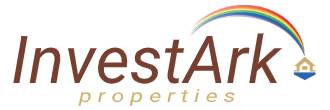Typically referred to as CapEx, are the funds used by a company to acquire, upgrade and maintain an apartment community. An expense is considered to be a capital expenditure when it improves the useful life of an apartment and is capitalized – spreading the cost of the expenditure over the useful life of the asset.
Capital expenditures include both interior and exterior renovations.
Examples of exterior CapEx: Repairing or replacing a parking lot, repairing or replacing a roof, repairing, replacing or installing balconies or patios, installing covered parking, large landscaping jobs, rebranding the community(signage), new paint, new siding, repairing or replacing HVAC and renovating a clubhouse.
Examples of interior CapEx: New cabinetry, new countertops, new flooring, new fireplaces, new appliances, opening up or enclosing a kitchen, new light fixtures, interior paint, plumbing projects, new blinds and new hardware (i.e. door knobs, cabinet handles, outlet covers, faucets, etc.).
Examples of things that wouldn’t be considered CapEx are operating expenses, like the costs associated with turning over a unit (i.e. new carpet, paint, cleaning, etc.), ongoing maintenance and repairs, ongoing landscaping costs, property management expense, utility expenses, etc.


